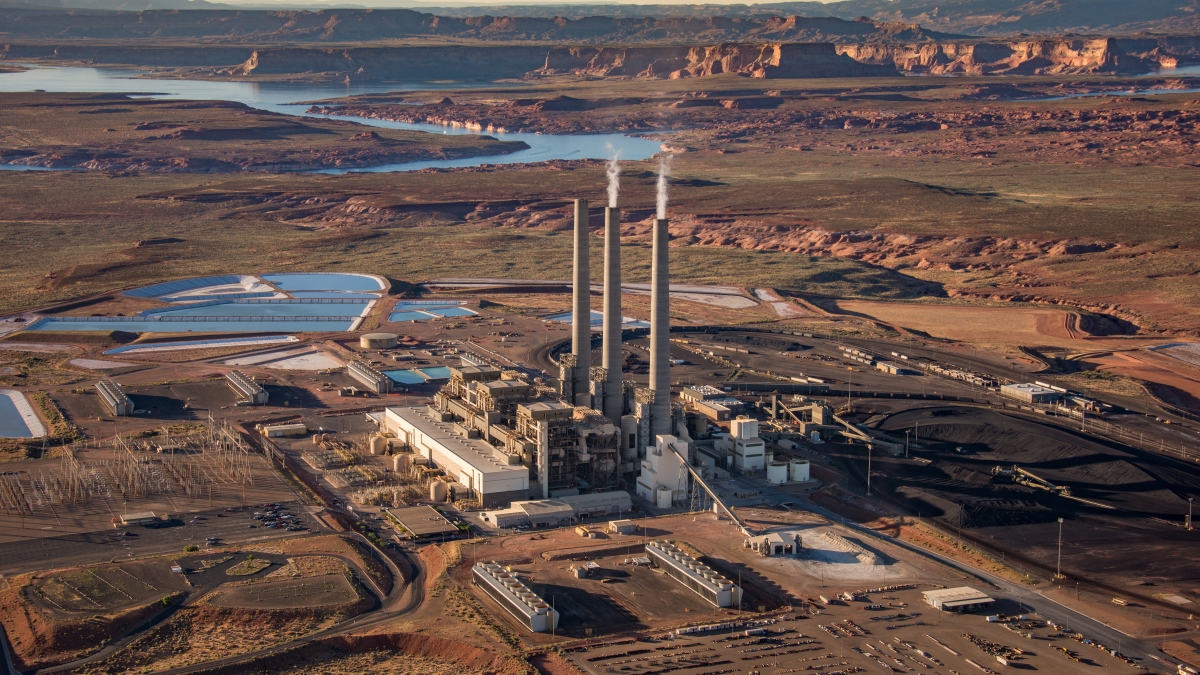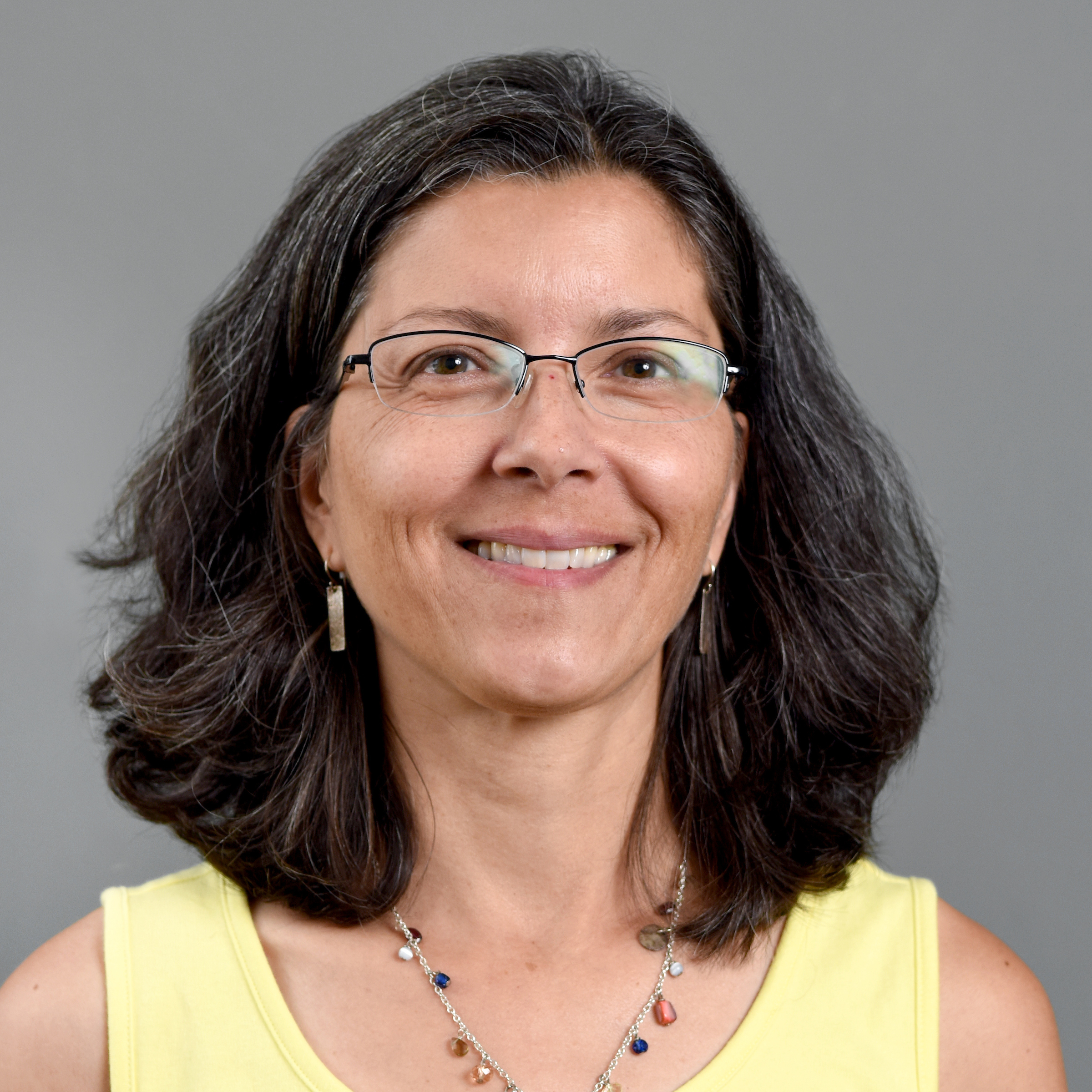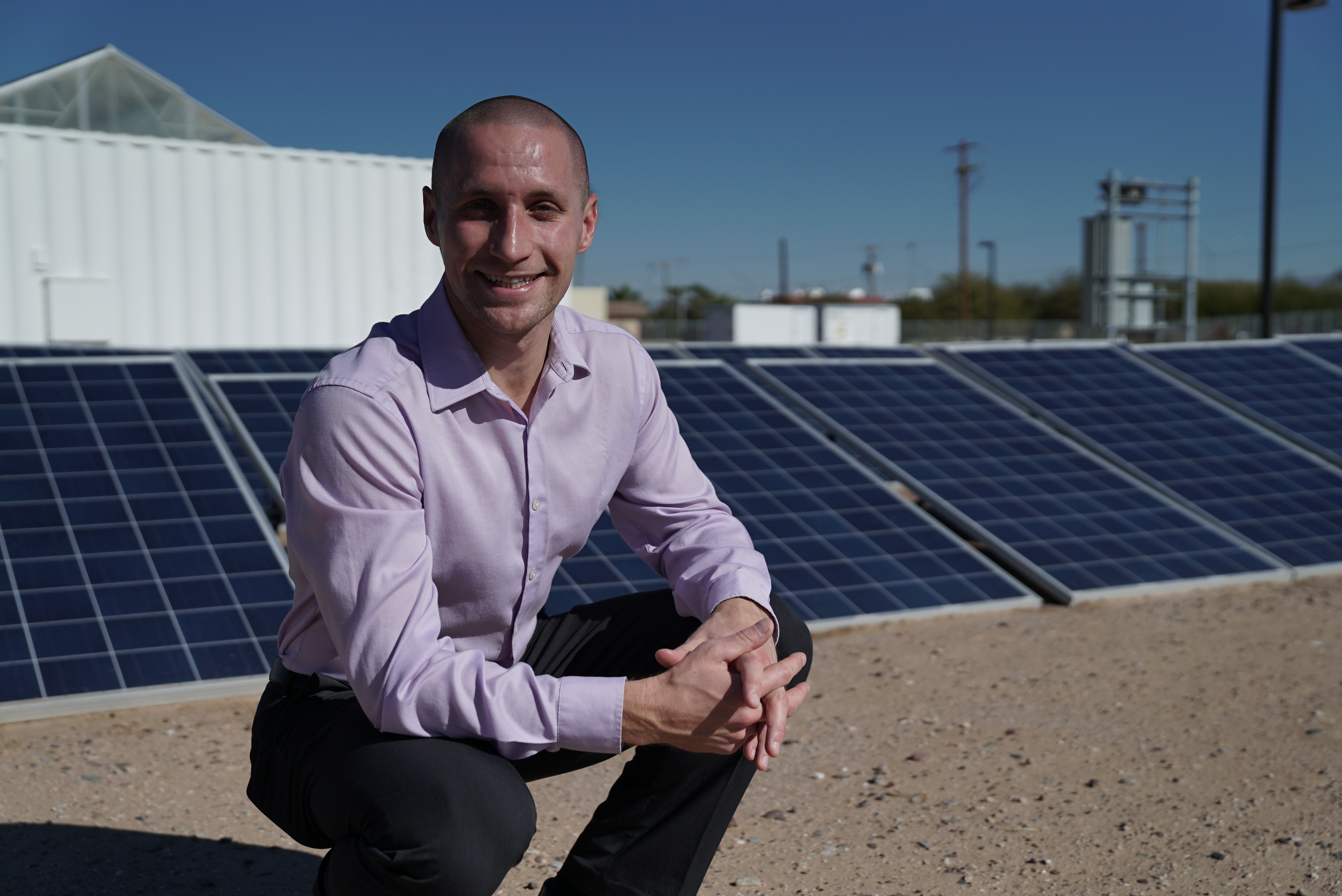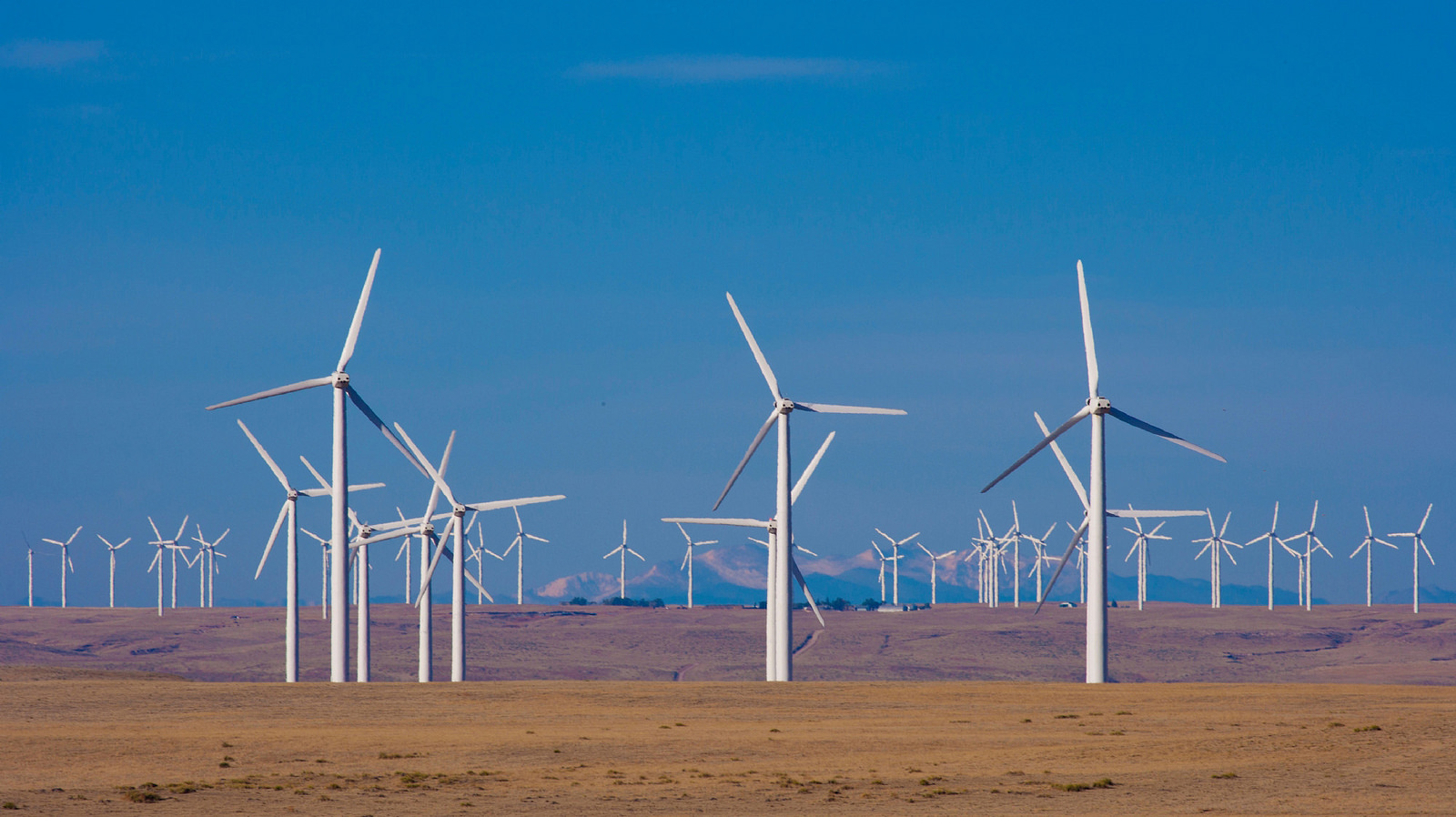Editor's note: This is the final installment in a three-part series on energy research at ASU. The first story examined the need for scalable solutions; the second story looked at the challenges facing solar power.
Earth is experiencing a Great Transition as its peoples slowly shift from fossil fuels to wind, plants, natural processes and our sun.
It’s not the first time people have changed where they get their energy sources, but as energy historian Chris JonesChris Jones is an assistant professor in the School of Historical, Philosophical and Religious Studies at ASU. said, what makes the Great Transition different is that this time we need to get rid of something, instead of just adding something. Climate change is the binding constraint.
“If we had a lot of time, it wouldn’t be a big deal, truthfully,” policy expert Elisabeth Graffy said. But, with the window for making progress on climate change shrinking, it gets a lot more complicated.
Arizona State University is part of a new coalition of 13 leading research universities committed to tackling climate change. The group — called the University Climate Change Coalition — includes universities from the United States, Canada and Mexico.
In the U.S., climate change has become a divisive issue because of the hyperpolitical furor that drives our politics.
“We’re alone in that,” said Gary Dirks, who directs LightWorks, a network of people working together on a broad spectrum of energy issues at ASU. “The rest of the world just looks at us like we’re idiots, and it’s ending in the United States.
“The reason I can say that is because A) I’m a scientist, so these people that say ‘Well, I’m not a scientist, but …’ Well, OK, but I am a scientist. B) I was a senior executive at British Petroleum. I was there when these conversations were going on. I know exactly what the oil industry knew in the '90s, and we all knew that climate change was the issue. The American companies chose to take a stance that says, ‘We think government interference in our business is a more serious problem than climate, so we’re going to make sure government doesn’t interfere.’ Well, that era is now over. ... Climate is a very serious problem.”
What is not always thought about is the reality of getting from Point A to Point B, which involves the governing and policy dimensions Graffy studies. (As ASU chemist Ellen Stechel put it, “‘If I can make it work’ is not enough.”)
Elisabeth Graffy
Graffy is professor of practice in the School for the Future of Innovation in Society. She also co-leads the policy theme for LightWorks. Graffy has spent most of her career in government, much of it at the federal level. Over the years she worked on a number of issues that all led back to energy. “Strategic management of the science-policy interface” is how she describes her field.
No single agency makes energy policy for the federal government.
“There wasn’t anyone with direct accountability to conceptualize this new world we were in,” Graffy said. “I knew all of it was changing pretty quickly and that universities hadn’t really caught up either, but that new ideas had to be developed, new approaches needed to be developed. We needed to deal with where things were moving fairly quickly.”
She thinks about the places where things intersect. Where can you get the most bang for your buck by making changes? You cannot change a complex system by designing it from the top down. You have to understand it as an organic entity. She finds the intersections between policy issues.
“It requires a particular way of being able to see the big picture in the little pictures, and then being able to connect them periodically and not get super-worried about the fact you can’t connect them all,” she said. “I think it can easily be overwhelming. That’s why I wanted to be at a university. How to think about things that could be overwhelming in a way that makes them conceptually manageable and operationally tractable — that is the challenge for work in this space.”
Government officials, while often experts in their subject, rarely have the latitude to sit back and put their policies in grander contexts. While that’s possible at a university, there’s a downside to it.
“Funding for research into energy policy and governance is almost nonexistent,” Graffy said. “Funding shows that the research is legitimate. You can build a base of people who can work on it. You can build partnerships with other faculty, and you can bring in students and postdocs and whatever and you can just do more work. The funding we’re talking about is not that much, and it’s not really clear where you find it. ... I won’t say it never happens, but it almost never happens. ... It’s very, very seldom we see a call for a $25 million proposal come out.”
The guy who owns the corner station
As research leads to energy policy changes, collateral damage will be unavoidable. What about those who make a living selling gasoline to drivers?
“Yeah, the guy who owns the gas station on the corner is toast,” Dirks said. “It’s just a question of in what way it’s going to happen. There are ways that he could survive. ... (He) won’t be like he is today, but some of them could very well survive — I hope they do — but it won’t be up to him.”
Once Clark Miller met with a federal-state partnership organization that works with the poorest counties along the Mississippi Delta — some of the poorest in the nation — about economic development. Natural gas, oil and coal activity in three-quarters of those counties will disappear over the next 50 years.
“Did they want to talk to me about thinking strategically about how to get ahead of this problem?” Miller said. “No way. That was a political nonstarter for that organization. This is the conversation we’re trying to change.”
Miller directs the Center for Energy and Society in the School for the Future of Innovation in Society at ASU. The center is the result of a decade of his work. What the center does is put people back into the energy equation.
Some jobs and communities are not going to fare well in the Great Transition. Coal miners are only the tip of the iceberg.
“We ought to be ahead of this problem,” Miller said. “We know it’s coming, that there are places and people whose jobs and livelihood, whose community well-being and economic lifeblood depends on fossil-fuel energy resources. We know exactly who these people are. We can map them and measure them, but no one has even begun to ask that question. People want to hide their head in the sand.”
ASU engineer Nathan Johnson points to one solution: a potential $40 billion market in microgrids by 2024.
“The push or the demand for those technologies can’t be attained without sufficient human resource capability to do the work,” he said. “We have a series of training programs for workforce development.”
LightWorks started that work with funding from the Navy for veterans. Called the NEPTUNE project (for Naval Enterprise Partnership Teaming with Universities for National Excellence), it has trained about 100 veterans through boot camps in microgrids, cybersecurity and electrogrids, among other subjects.
An assistant professor in the Polytechnic School of the Ira A. Fulton Schools of Engineering, Nathan Johnson researches and teaches sustainable and resilient energy systems. Photo by Krisanna Mowen/ASU
“These folks walk into jobs where they have a four-year degree, and they’re making, you know, $80,000 to $130,000 a year,” Johnson said. “So they’re doing really well for themselves for a while. And then, they have a specialized skill set in the industry that has a significant amount of retirees right now, but then also given the complexities and increasing threats to the grid, they’re adding additional types of personnel. So not only are they losing their existing human workforce, but they’re adding job titles they don’t even have people to fill. And so then we provide tailored skill sets to these niche areas.”
There are plans to extend the program through a global hub-and-spoke model.
The Great Transition is an opportunity to improve lives, Miller said. Literally tens of trillions of dollars will be spent to reinvent and decarbonize energy systems.
“If all we get out of that is an energy system that’s clean, I’ll be happy because we have a carbon-neutral energy system at the other end of that transition — but I will also be very sad because we will have spent all that money and only gotten an energy system that does what the current one does but it’s carbon-neutral,” he said. “I’d really love to see this also be an investment in significantly upgrading the human future. How do we use these investments to create a better future for humanity?”
Once upon a time
A lot of the language about climate change and the Great Transition uses the word “sacrifice.” Let’s put that in a sentence:
“It’s a moral issue, and we may need to reduce our quality of life or make sacrifices in order to not destroy the world for future generations.”
Not everyone is going to leap with joy upon being told they need to go vegan, live in a microhouse, sell the SUV and bike to work.
Graffy sighs.
“That’s not a narrative that makes people want to jump up and say, ‘Sure, let’s do that,’” she said.
And the narrative about the Great Transition matters a lot.
“We’re storytelling animals. We love stories,” said Joni Adamson, a professor of environmental humanities in the Department of English. “Human thinking on climate, human thinking on energy, on energy transitions, whatever you want to call it, is centuries, actually thousands of years old. If you look back to the most ancient almanacs, people were thinking about the stars, humans and soil.”
If you ask people if they can remember a book that changed their life or that changed their thinking, almost everyone has one. It usually involved a character that had some kind of change, whether it’s a myth where they turned into a bird or had some kind of life transition.
“Books literally give us the tools to imagine transition,” Adamson said. “That’s why we’re being invited to be at the table now with sustainability scientists and people who are thinking about energy transitions.”
In 2010 Dirks held a retreat for ASU humanists to talk about how they could bring their insights into the School of Sustainability.
“No one can quite figure out what we have to do with the environment and sustainability, but actually we’ve been really long and really deep for 30 years in environmental issues,” Adamson said. “If you think about Edward Abbey, he was writing back in the '60s. He was drawing who would become environmentalists to a cause.”
Data produced by scientists has proven climate change is real, but it hasn’t been put into an effective narrative. That’s what Adamson and other humanists are trying to do.
“We’re trying to think about human behavior, motivations and desires because when it comes to the reasons why we need to have energy transitions, it’s because of human behavior, motivations and desires,” she said. “It’s also because we get locked into thinking that things have to be the way we think they have to be. We get locked into ideas, and we don’t know where those ideas came from. We don’t understand why those ideas might need to change in an energy transition, so that’s where humanists come in.”
The cautionary tale of Germany’s ‘Energiewende’
The narrative coming out of Germany, one of the first countries to make a concerted effort to go green, is more horror story than fairy tale.
That’s normal, energy historian Jones said.
“Energy transitions have always been hugely chaotic,” he said. “There hasn’t been a rational energy transition without hiccups. ... How much attention do you pay to those hiccups versus the long-term arc of whether those were the best set of investments to make?”
The “Energiewende,” or “Energy Turnaround,” is a massive German project on the scale of the American New Deal or Soviet five-year plans. A complex set of interrelated laws and regulations aimed at turning energy use green, its goal is to reduce greenhouse gas emissions by 80 to 95 percent from 1990 levels by 2050, without nukes but with renewables.
And it’s unsuccessful, according to Christine Sturm, a veteran of German energy who recently earned a PhD in sustainability at ASU. She has worked on market deregulation, as an industry spokesperson, and in several executive positions at RWE, Europe’s largest energy provider.
Exploding energy costs, failed policy tools like German and European Union trading plans, and reeling utility companies, coupled with a failure to meet goals, are the dark side of green. The hurdles are significant and unforeseen.
The Cedar Creek 2 Wind Farm in Colorado is owned by BP Wind Energy and Sempra U.S. Gas & Power. As the Great Transition continues, utilities will need solutions to reliably deliver power via renewables. Photo courtesy of BP Images
Energy systems, as Sturm notes, are complex stews of technologies, institutions, markets, regulations and social systems. “Nations have little experience intervening in such socio-technical systems to steer them in desired new directions over specified periods,” she wrote in an essay published in Issues in Science and Technology last year.
The big challenge for the Energiewende is integrating wind and sun into existing energy systems. Despite efforts at converting excess electrical power to hydrogen, methane, heat or other storable commodities, storing the electricity necessary to solve the problem remains “technologically, economically and politically out of reach,” Sturm wrote.
The wind doesn’t blow every day, and the sun doesn’t shine every day, either. What happens on still, overcast days?
Collapse has been averted only through two mechanisms that run directly counter to the goals of the Energiewende.
Intermittency is balanced by running fossil power plants when conditions aren’t right for renewables. On sunny and windy days, Germany produces so much power it has to push the surplus on neighboring grids, disturbing their systems and creating additional costs. “These solutions are neither economically sustainable nor carbon-free,” Sturm wrote.
The solution doesn’t exist. Moving to a low-carbon energy system requires the ability to store power at scale: batteries. Sturm doesn’t share Elon Musk’s belief that the entire world can run cheaply on 2 billion of his Powerpack batteries. And buying your way out of a bind isn’t really solving the problem.
“It suggests that energy transitions come at low costs,” Sturm said. “Unfortunately this is all but true. If a storage volume of 10 kWh costs, as Elon Musk indicates, $3,500, Germany could have leveled wind and solar intermittences generated in 2015 — when Germany covered about one third of its energy demand with renewables — by paying $3.15 trillion on top of the already high Energiewende costs. This theoretical figure is debatable, because it oversimplifies the complexity of large socio-technological systems.”
Power demand is never flat, there are alternatives to lithium ion batteries leveling out intermittencies, and consumption patterns can be adjusted to the patterns of energy generation, Sturm argued.
“But, even if one creatively combines these ideas and finally succeeds to half the storage demand, the burden remains simply too high,” she said.
Other countries can expect to experience the same problems Germany is experiencing, Sturm said.
“Despite all achievements in the renewable energy realm, Germany’s steadily growing regulatory labyrinth has mostly failed to induce the desired outcomes, offering instead strong lessons about the unintended consequences of such interventions,” she said.
Policy expert Graffy isn’t too surprised. She’s not discouraged, either.
“It’s not surprising that in the early experiments there are some things that work well and some things that don’t work well,” she said. “The challenge really is to look at those things and not really get disheartened by the fact that there are things that didn’t work out right to begin with, to keep our eyes on the ball, if you will. ... Learn as we go — the stuff is very, very dynamic.”
The Navajo Generating Station
Everything you have read in this series to this point is embodied in the power plant crouched on sandstone just east of Page: the rise of renewables, policy, people, market forces, microgrids — all of it.
When populations in the Southwest exploded during the 1950s and 1960s, there was a need for more power. Suggestions of damming the Colorado River in the Grand Canyon didn’t go over well. The solution was the Navajo Power Project.
A coal-fired power plant — the Navajo Generating Station — was built. Coal was mined by Navajo miners on Black Mesa, then shipped by rail to the plant, burnt, and the electricity transmitted along 800 miles of line. The whole project was completed in 1976.
Payments to the Navajo Nation account for about a quarter of the tribe’s revenues (and 65 percent of the Hopi tribe’s revenues). Native American tribal members, mainly Navajo, make up 83 percent of plant employees and 93 percent of mine employees, resulting in about 850 direct tribal positions.
Navajo Generating Station is the biggest coal-fired plant west of the Mississippi. It is also among the first coal plants to be shuttered because of low natural gas prices.
The Salt River Project — the plant’s majority owner — decided to shutter the plant in December 2019. Utilities are mandated by law to use the least-cost resource. That’s not coal anymore.
“(Coal is) expensive, it’s dirty — nobody’s going to do that,” Dirks said. “It’s an expensive fuel. If you want to burn something to generate power, burn natural gas. It’s easier to work with, it’s very clean, it’s cheaper, and that’s exactly what SRP decided with Navajo Generating Station: ‘Why should I burn coal when I can burn gas? And I can burn it closer to where I need the power anyway, because I can get gas in Phoenix. I don’t need to get my power from coal 400 miles to the north.’ And that’s true everywhere on the entire planet; virtually everybody is saying, ‘Well, that’s expensive fuel.’”
Last October, the Trump administration announced $30 million worth of U.S. Department of Commerce grants to help states and regions deal with the declining use of coal and plant closings.
One grant included almost $100,000 for ASU and Northern Arizona University to help the Navajo Nation transition from coal to renewables.
Kris Mayes is a professor of practice in the School for the Future of Innovation in Society. She is also a former state corporation commissioner and co-author of the Arizona Renewable Energy Standard, which requires that by 2025 utilities must generate 15 percent of their energy portfolio from renewables.
“The shutting down of the Navajo Generating Station is an enormous impact to the Navajo Nation in terms of lost jobs and lost revenues,” Mayes said. “This is huge. ASU is committed to doing everything we can to assist the nation to come out of this in a better position.”
The two universities are working in three areas.
First, they are creating an auditable decision-making process. It’s a transparent, statistically based, methodologically sound tool that allows organizations to make decisions in sound statistics and economics, and then demonstrate the thinking behind their decision. That is being led by an ASU professor who has done the same thing for Fortune 500 companies around the world. Daniel Brooks is an associate professor emeritus in the W. P. Carey School of Business.
The process “will allow the Navajo Nation to arrive at sound options for bolstering their economy in the event the (plant) does close,” Mayes said. “What are the best and highest options for them to create jobs and to fill in the economic vacuum that will be created by (the plant) going down?”
There’s a lot of pressure on the Navajo Nation government to plot a successful path.
The second area is education and outreach around development of huge solar and wind projects. Right now, there is only one solar farm on Navajo Nation land. One hurdle to solar is overcoming perceptions it could interfere with grazing leases, an important part of the local economy. “They can actually go hand in glove,” Mayes said.
This summer she will visit 110 chapter houses with NAU and Navajo Nation reps to talk about benefits and attributes. Chapter houses are a semi-autonomous hyper-local government. They’re similar to New England town halls.
“It’s a big assignment, and there’s no way we’re going to get it done this summer,” Mayes said. “This is more like Round One. ... It’s going to be a long journey.”
Finally, Johnson will be working with Navajo Tribal Utility Authority (the Navajo utility) on grid modernization projects and possibly microgrids for areas that aren’t electrified. Johnson will use solar for chapters that don’t have electricity and will also do some workforce training in hopes that people who lose their jobs can be reemployed.
“Our job is to make sure we can come out of the other side of this in a better place,” Mayes said. “It’s a long-term effort, but ASU is committed to seeing it through.”
The same process could be applied to Appalachia.
“You quickly realize that a lot more coal plants are going to be shut down in the not-too-distant future,” she said. “This is just the first of many that will be shuttered. ... Even as the transition occurs, we have to help the communities that the transition impacts, like the Navajo Nation. We cannot just leave communities in the lurch who have for years been supporting low-cost energy for the rest of us.”
Energy's Great Transition series
Part 1: The need for developing scalable solutions
Part 2: Solar, rising demand and an energy grid in a box
Part 3: Government policy and the real-world economic effects on people
Top photo: The Navajo Generating Station near Lake Powell. Photo by Michael McNamara/Salt River Project
More Science and technology

ASU professor breeds new tomato variety, the 'Desert Dew'
In an era defined by climate volatility and resource scarcity, researchers are developing crops that can survive — and thrive — under pressure.One such innovation is the newly released tomato variety…

Science meets play: ASU researcher makes developmental science hands-on for families
On a Friday morning at the Edna Vihel Arts Center in Tempe, toddlers dip paint brushes into bright colors, decorating paper fish. Nearby, children chase bubbles and move to music, while…

ASU water polo player defends the goal — and our data
Marie Rudasics is the last line of defense.Six players advance across the pool with a single objective in mind: making sure that yellow hydrogrip ball finds its way into the net. Rudasics, goalkeeper…





